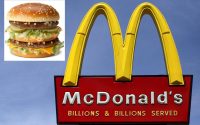Manhattan’s office occupancy shows signs of recovery
How empty or full are Manhattan office buildings? Welcome to “The Twilight Zone.”
The “workers at their desks” situation recalls a famous episode of the classic TV show where a time warp sends an airliner back to the dinosaur age. The pilot flies back into the jetstream, hoping to make it back to 1961 New York — but they only make it to 1939.
We’re still far from achieving pre-pandemic occupancy. But signs of recovery are promising.
Manhattan’s office occupancy ticked upward to between 53 and 55 percent on an average weekday, according to the Partnership for New York City, which is expected to announce the results of its latest survey this week.
If the estimate holds up, it would be a significant symbolic as well as substantive advance over the 49 percent reported for September, according to Partnership CEO and president Kathryn Wylde.
Based on the latest numbers, employers and landlords foresee 57 percent occupancy by the year’s end, Wylde said.
Meanwhile, the notoriously lowballing Kastle Systems Back to Work Barometer’s “NY Metro” number (which includes suburbs and even part of Pennsylvania) is flirting with half-full at 49.5 percent, its highest estimate to date.
Nobody really knows the whole score, because there are too many fudge factors and missing links in trying to gauge a nearly half-billion square-foot market.

The gulf between pre-pandemic and current office attendance might be somewhat less wide than any data suggest.
Why? The obsession over today’s occupancy starts with the fantasy that offices were 100 percent full prior to March 2020. (Remember, we’re talking about people at their desks — not about how much space is leased). But for some years prior, many employees enjoyed WFH at least part-time, especially in the tech, creative and media fields.
The Partnership bases its data on surveys of major tenants. Kastle counts entry swipes only at buildings where it provides security services.
The Partnership’s attendance estimates seem low compared with major landlords’ claims that their buildings are more than 60 percent full — and compared with our own observations.

Midtown Sixth Avenue towers look near-full based on our highly unscientific technique of looking into their windows from ours. Restaurants are buzzing. Customers line up again for shoe shines at Eddie’s in the Rockefeller Center Concourse.
The same can’t be said of struggling Third Avenue, where scarce office attendance killed off dozens of stores and even once-thriving restaurant Hillstone.
Kastle’s 49.5 percent figure could actually be too high for less-than-stellar buildings. Its count of mostly A-minus and Class-B buildings omits many older, smaller Class-B-minus buildings with even lower physical occupancy.
Time will tell whether the upticks augur a roaring recovery, a passing blip, or something in between. We’d bet on the high middle ground as employers crack down on WFH excesses — and as remote workers grasp that when layoffs come, they’re the first to go.


